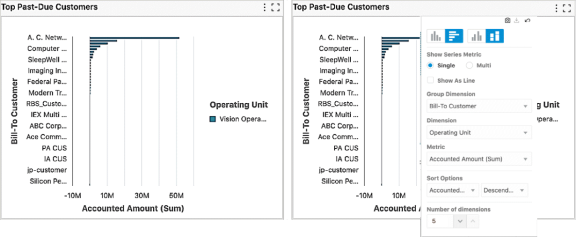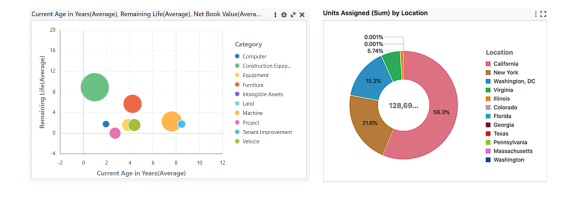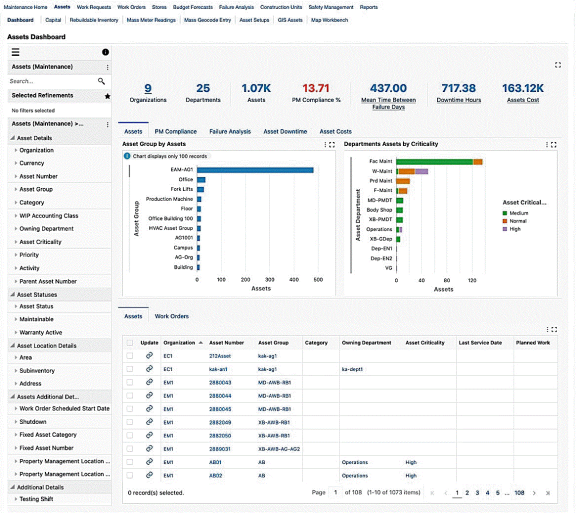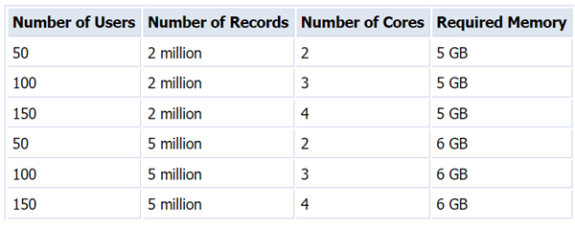Enterprise Command Center Framework
The power of the ECC dashboards is down to the ECC Framework that it sits on top of. This middleware technology is a powerful and scalable piece of architecture and consists of three layers:

Charts
The available chart types are many and varied, but a few examples are shown here:


The following list is not exhaustive but illustrates the breadth of content available.
Here is an example of of ECC from Oracle EBS Asset Management

ECC Framework requires a new Web Logic server installation. The recommended approach is that it runs on a separate server from E-Business Suite Applications. To install, patch, and configure the ECC, you’ll need to utilise DBA support to install a patch and establish a data refresh.
There are a number of initial customisations and settings that need to be applied at the point of installation and can be completed in-house with DBA support, however, Claremont provides a cost-effective service to ensure that installation goes smoothly and without incident.
It takes approximately three days to install, patch, and complete the data configuration.
The memory required by an ECC is shown in the following image, but it is dependent on the dashboard you are using. These are the minimum specifications from Oracle.
In Claremont’s experience with ECCs, we have discovered these recommendations to be the bare minimum, and increasing them is required in some cases.

ECCs cover a wide range of data in your EBS database and have a wide range of visualisation tools and drill-down reporting features. They can support your analysis and decision-making by honing in on problem areas.
Careful thought needs to go into areas such as, server architecture and data refresh frequency to create the optimum balance between performance and usefulness.
If you want more from Oracle E-Business Suite, then using an Enterprise Command Center can help identify and respond to key business transactions without the need for a custom reporting solution.
If you are looking for an Oracle partner who can help you with your Oracle ECC Deployment, goes about it the right way, and can back up the talk, then you can email us at info@claremont.co.uk or phone us on +44 (0) 1483 549004.